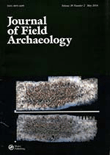
JOURNAL OF FIELD ARCHAEOLOGY
Scope & Guideline
Innovating Archaeological Research for Tomorrow
Introduction
Aims and Scopes
- Interdisciplinary Research Methods:
The journal promotes the use of diverse methodologies including remote sensing, geochemical analysis, and digital recording techniques, facilitating innovative approaches to archaeological fieldwork. - Cultural Heritage and Identity:
A significant focus lies on the role of archaeology in interpreting and preserving cultural heritage, particularly in relation to identity formation and community empowerment. - Environmental and Landscape Archaeology:
Research often explores the interactions between humans and their environments, studying settlement patterns, subsistence strategies, and ecological impacts over time. - Mortuary and Ritual Practices:
The journal frequently examines funerary customs and ritualistic behaviors, providing insights into social structures and cultural beliefs across different civilizations. - Technological Advances in Archaeology:
The journal highlights advancements in archaeological technology, such as 3D modeling, GIS, and photogrammetry, showcasing their implications for archaeological practice and understanding.
Trending and Emerging
- Impact of Climate Change on Archaeological Sites:
A growing emphasis on the vulnerabilities of archaeological sites in the face of climate change highlights the need for sustainable practices and resilience in archaeological research. - Community Engagement and Heritage Education:
There is an increasing focus on the role of archaeology in community building and education, exploring how heritage can foster social cohesion and collective identity. - Integration of Digital Technologies:
The use of digital tools and techniques, such as virtual reality and advanced imaging technologies, is on the rise, transforming how archaeological findings are recorded, analyzed, and presented. - Ethics and Archaeological Practice:
Emerging discussions surrounding the ethics of archaeological practices, including issues of repatriation, cultural sensitivity, and the impact of archaeological work on local communities, are becoming more prevalent. - Archaeology of Everyday Life:
Research focusing on the daily practices and material culture of past societies is gaining traction, offering insights into the lived experiences of individuals across various historical contexts.
Declining or Waning
- Traditional Excavation Reports:
There has been a noticeable decrease in straightforward excavation reports, as the focus shifts towards more interdisciplinary and technologically advanced approaches to archaeological research. - Classic Historical Archaeology:
Research centered exclusively on historical archaeology without integration of contemporary methodologies or broader cultural contexts appears to be waning, as the field moves towards a more comprehensive understanding of past societies. - Single-Culture Studies:
There is a decline in studies dedicated solely to individual cultures or civilizations, as the journal increasingly emphasizes comparative and global perspectives that connect multiple archaeological narratives.
Similar Journals

ARCHAEOLOGY
Unraveling Mysteries, Enriching KnowledgeARCHAEOLOGY is a distinguished peer-reviewed journal published by the Archaeological Institute of America, focusing on the multifaceted aspects of archaeological research and its relevance to contemporary society. Established in 1966, this journal serves as a critical platform for scholarly discourse in the field, showcasing innovative findings, theoretical advancements, and methodological discussions related to archaeology. While it maintains a Q4 ranking within the disciplines of archaeology and arts and humanities, its contributions remain valuable for those engaging in archaeological studies or seeking to understand historical and cultural narratives. The journal is accessible in print, with an ISSN of 0003-8113 and an E-ISSN of 1943-5746, ensuring that a wide audience can benefit from its insights. Although currently not classified as Open Access, the meticulous peer-review process ensures a high standard of academic rigor, making it an essential source for researchers, professionals, and students alike who are dedicated to exploring the past through archaeological lenses.

Studijne Zvesti Archeologickeho Ustavu Slovenskej Akademie Vied
Illuminating the archaeological landscape of Slovakia and beyond.Studijne Zvesti Archeologickeho Ustavu Slovenskej Akademie Vied is a leading journal in the field of archaeology, published by the SLOVENSKA AKAD VIED, ARCHEOLOGICKY USTAV, based in Nitra, Slovakia. This esteemed journal, with the ISSN 0560-2793, has established itself as a vital resource for scholars and researchers, reflecting significant academic contributions in both the arts and humanities as well as social sciences. With a 2023 Scopus ranking placing it in the second quartile (Q2) for archaeology, it showcases rigorous research and innovative methodologies, essential for advancing archaeological studies. While it is not an Open Access journal, it continues to offer valuable insights into archaeological findings, theoretical frameworks, and interdisciplinary approaches. The journal serves as a bridge, connecting local Slovak archaeology with international discourse, making it an indispensable tool for students, professionals, and academics striving for a deeper understanding of the archaeological heritage of Slovakia and beyond.
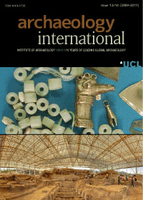
Archaeology International
Advancing archaeological knowledge for a global audience.Archaeology International is a prestigious open-access journal dedicated to advancing the field of archaeology since its inception in 1997. Published by UCL PRESS, the journal provides a platform for researchers, professionals, and students to disseminate their findings and share innovative ideas in archaeological studies. It features a rich array of articles that capture current trends, methodologies, and debates within the discipline, fostering a collaborative academic environment. Based in London, England, this journal is committed to accessibility and inclusivity, ensuring that valuable research is available to a global audience without subscription barriers. With a focus on interdisciplinary approaches, Archaeology International serves as an essential resource for those interested in the preservation of cultural heritage, and it actively encourages contributions that explore both past civilizations and contemporary archaeological practices.

Revue Archeologique du Centre de la France
Navigating the Complexities of Archaeology in Central FranceRevue Archeologique du Centre de la France is a prestigious academic journal dedicated to the field of archaeology, with a special focus on the rich historical and cultural heritage of central France. Published by FED EDITION REVUE ARCHEOLOGIQUE CENTRE FRANCE, this journal has been an open-access platform since 2004, ensuring that researchers, professionals, and students can freely access cutting-edge archaeological findings and scholarly discussions. With an acute emphasis on disseminating knowledge and fostering ongoing dialogue in archaeology, Revue Archeologique du Centre de la France serves as a vital resource for those keen to explore the complexities of French archaeological studies. Housed in Tours, this journal not only highlights regional heritage but also situates it within broader archaeological frameworks, making it an essential contribution to the field. Researchers can look forward to engaging with a diverse array of articles that cover both theoretical and applied aspects of archaeology, bolstering the understanding of our shared past.

Bulgarsko e-Spisanie za Arkheologiya-Bulgarian e-Journal of Archaeology
Bridging past and present with open-access archaeological research.Bulgarsko e-Spisanie za Arkheologiya - Bulgarian e-Journal of Archaeology is a prominent open-access journal published by the ASSOC BULGARIAN ARCHAEOLOGISTS since 2011, serving as a vital platform for the dissemination of archaeological research and findings in Bulgaria and beyond. With the ISSN 1314-5088, this journal is dedicated to advancing knowledge in the field of archaeology, facilitating the sharing of innovative studies, fieldwork results, and theoretical discussions. It is particularly significant for researchers, professionals, and students who are interested in the archaeological heritage of Bulgaria, providing an accessible venue for high-quality scholarly contributions. The journal's commitment to open access ensures that its rich repository of knowledge is available to a global audience, enhancing collaboration and fostering new discoveries within the discipline.

International Journal of Historical Archaeology
Advancing Knowledge: The Premier Platform for Archaeological ScholarshipInternational Journal of Historical Archaeology, published by SPRINGER, stands at the forefront of archaeological scholarship, focusing on the intricate relationship between historical events and archaeological findings. With an impressive impact factor underscored by its ranking in the Q1 quartiles across various categories, including Archeology and History, this journal serves as a premier platform for researchers, professionals, and students alike to disseminate groundbreaking findings and theoretical advancements in the field. Although it is not an Open Access publication, the journal provides valuable insights through its rigorous peer-review process, enhancing the quality of contributions. Covering a breadth of topics from 1997 to 2024, it is vital for advancing knowledge in historical archaeology and offers an essential resource for those invested in understanding our shared past through the lens of material culture. The journal's commitment to fostering interdisciplinary discussions enriches the scholarly community and supports the evolution of methodologies and perspectives within the domain.
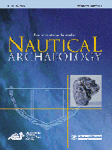
INTERNATIONAL JOURNAL OF NAUTICAL ARCHAEOLOGY
Unveiling Secrets Beneath the WavesWelcome to the International Journal of Nautical Archaeology, a premier peer-reviewed publication dedicated to advancing the study of maritime history and underwater archaeology. Published by Taylor & Francis Ltd, this esteemed journal, indexed with an ISSN of 1057-2414 and an E-ISSN of 1095-9270, serves as a vital platform for researchers, professionals, and students alike. Celebrated for its rigorous scholarship, the journal ranks in the top quartile for both Archaeology and History in 2023, reflecting its influential role within the academic community. Covering a broad spectrum of topics from ancient shipwrecks to contemporary marine archaeology practices, the journal aims to foster interdisciplinary dialogues that enrich our understanding of humanity's maritime heritage. With a publication history dating back to 1972, it continues to thrive as a key resource in the field. Although currently not offering Open Access, the insights published in this journal are invaluable for those seeking to explore the intersections of archaeology and oceanography, making it a must-read for anyone engaged in or studying these dynamic disciplines.
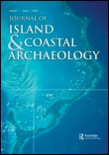
Journal of Island & Coastal Archaeology
Advancing Archaeological Insights from Shore to ShoreThe Journal of Island & Coastal Archaeology, published by Routledge Journals, Taylor & Francis Ltd, stands as a leading publication in the fields of archaeology, ecology, and history, boasting a prestigious Q1 ranking in multiple categories as of 2023. Since its inception in 2006, this journal has been a vital resource for researchers, professionals, and students interested in the rich archaeological heritage of island and coastal regions. With an impressive Scopus ranking that places it in the top tiers of both Arts and Humanities and Social Sciences, it offers insightful studies and innovative methodologies that address the complexities of human interactions with marine and terrestrial environments. The journal aims to advance knowledge and promote discussion through rigorous peer-reviewed articles, fostering a deeper understanding of indigenous cultures and their environmental contexts. While currently not offering an open-access model, the journal remains committed to disseminating high-quality research crucial for shaping future archaeological scholarship.
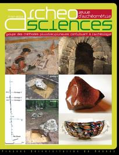
ArcheoSciences-Revue d Archeometrie
Unlocking the Secrets of Material Relics Through ScienceArcheoSciences-Revue d Archeometrie is a prominent scholarly journal dedicated to the field of archaeology, published by PRESSES UNIV RENNES in France. With an ISSN of 1960-1360 and an E-ISSN of 2104-3728, this journal has gained recognition for its focus on the intersection of science and archaeological research, aiming to foster interdisciplinary dialogue and innovative methodologies within archaeological studies. Although coverage of the journal has been discontinued in Scopus post-2021, it has maintained a respectable standing with a Q3 Quartile ranking in both the Archaeology (Arts and Humanities) and Archaeology categories as of 2023, as well as commendable Scopus rankings in relevant fields. As an accessible platform for researchers, professionals, and students, ArcheoSciences offers valuable insights into applied techniques and findings in archaeological science, making it an essential resource for those involved in the historical and cultural analysis of material relics. Researchers are encouraged to explore this journal to stay informed about frontier research and ongoing discussions in the discipline.
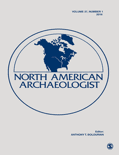
NORTH AMERICAN ARCHAEOLOGIST
Illuminating History Through Rigorous ResearchNORTH AMERICAN ARCHAEOLOGIST, published by SAGE PUBLICATIONS INC, is a prestigious journal that serves as an essential resource for professionals and scholars in the field of archaeology. With its ISSN 0197-6931 and E-ISSN 1541-3543, the journal aims to disseminate high-quality research that contributes to the understanding of the historical and cultural significance of North America from prehistory to the present. As of 2023, it holds an impressive Q2 category in Archaeology and ranks within the Q1 tier for Archaeology (arts and humanities), positioning it among the top journals in its field. Its Scopus rankings further emphasize its significance, reflecting a commendable percentile standing that underscores its influence in both arts and humanities and social sciences. The journal is committed to offering a platform for innovative research and scholarly discussion, making it invaluable for researchers, professionals, and students dedicated to advancing archaeological knowledge.